Rose "Cordana": description and recommendations for growing

Rose "Cordana" is well known to lovers of indoor plants and is successfully grown both in pots and in the open field as a curb decoration. The popularity of the flower is due to its high decorative qualities and unusual miniature size.

Peculiarities
Rose "Cordana" (lat. Rosa Kordana) is a typical representative of the Rosaceae family of the pink subfamily and is a small and very beautiful flowering plant. The history of the origin of the species goes back to the 19th century, when Chinese dwarf tea roses were brought to Europe in 1810. The new flower was highly appreciated by local growers, after which it was successfully crossed with a short polyanthus rose. As a result of selection, the first European miniature variety was bred, named after the grower Wilhelm Cordes, to whom he owed his appearance.
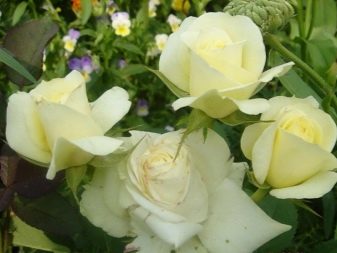
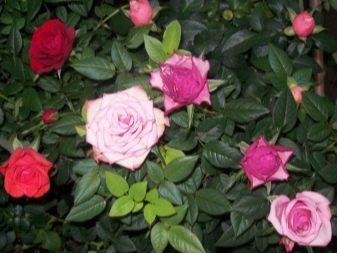

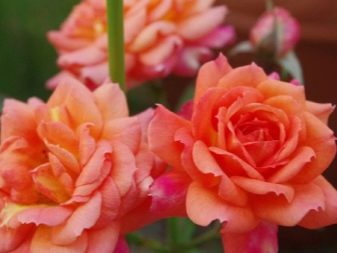
The range of this species is zones with a tropical and subtropical climate, however, "Cordana" grows excellently in temperate latitudes. Under favorable conditions, the plant often reaches 30 cm in height, is distinguished by a large number of beautiful and bright flowers of red, white, pink and yellow shades. The leaves are also a miniature copy of the leaf plates of large roses and have a rich dark green color. The flowering period of plants begins in May and lasts until October.
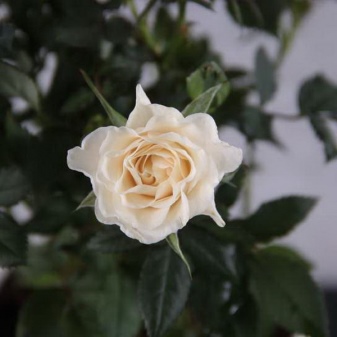
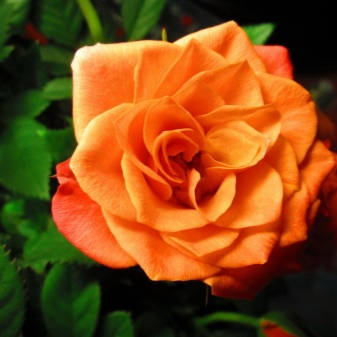
The main difference between "Cordana" and large roses is the complete absence of any smell, which allows people prone to allergies to plant it.
Varieties
Mini-rose "Cordana" has several sub-varieties intended for both home and border growing.
- "Mix" is the smallest member of the species and is only suitable for indoor breeding. It is considered the most capricious of all sub-varieties, as it requires the creation of especially favorable conditions. The plant owes its name to the variety of colors, which is why it has become very popular among amateur flower growers.
- "Lux Denmark" differs in compact bushes and pale purple, with an admixture of raspberry shades, flowers.


- "Gigi" characterized by red and white flowers, with proper care it can reach a height of more than 30 cm.
- "Amore" intended for cultivation in the open field and has tall bushes that grow up to 40 cm.

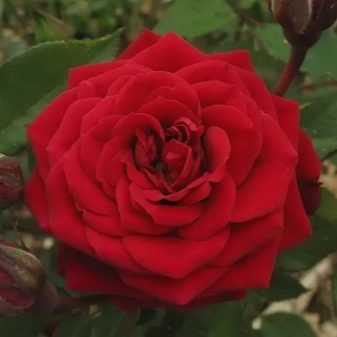
- Apollo has pale yellow flowers and can bloom for up to 20 weeks.
- Pasadena represents a classic rose in miniature, and is characterized by increased resistance to fungal diseases.
- "Caliber" characterized by miniature red flowers 2-3 cm in size, which bloom until the onset of cold weather.
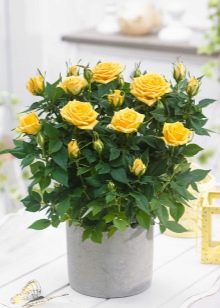

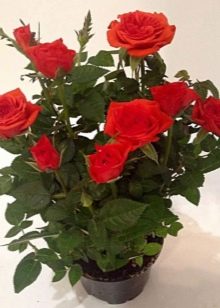
Care
All sub-varieties of roses "Cordana" are quite demanding in care, requiring special conditions. When growing a flower at home, many important factors must be taken into account and a number of mandatory procedures must be followed.
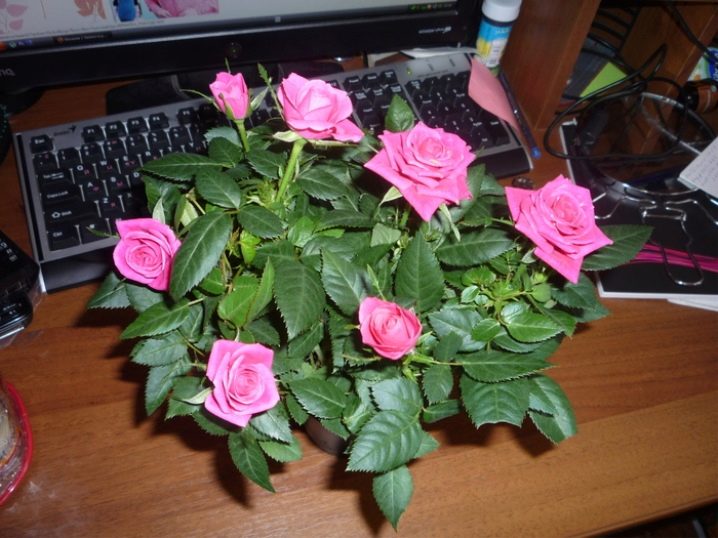
Accommodation
Immediately after purchase, the plant must be washed with warm water and sprayed with a solution from pests. It is better to place a flower on windows facing south or south-west, and it must be done in such a way that in the daytime it is moderately shaded by other plants. Exposure to direct sunlight, especially in summer, is unacceptable.The recommended air temperature is +15.20 degrees.
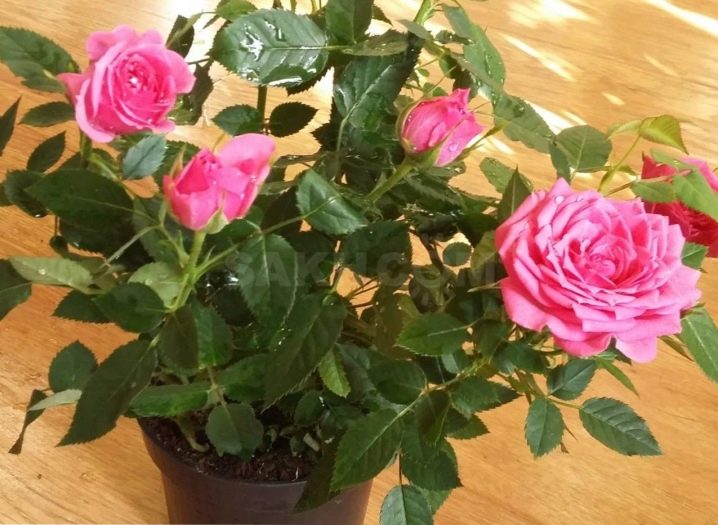
Watering
Rose "Cordana" needs weekly watering with warm, settled water. When using cold tap water, the plant can get sick with powdery mildew, an ailment that will be very problematic to cure. Watering should be quite abundant, with the obligatory removal of excess liquid from the pot. Otherwise, the rose may not bloom. In the summer, the plant needs a little more frequent watering, the need for which is determined by the dried top layer of the earth. During watering, it is recommended to lightly loosen the soil, providing oxygen to the roots of plants and improving air exchange.
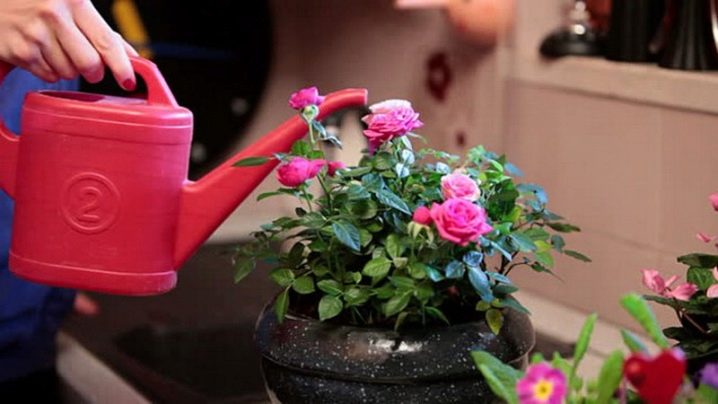
If you need to leave for a long time, it is recommended to pour a sufficient amount of water into a deep tray and place pots with roses in it. In this way, plants are able to feed for one to one and a half months. In addition to watering, it is recommended to spray the flowers weekly using settled water at room temperature.
Top dressing
The application of mineral and organic fertilizers is carried out twice a year, taking into account the vegetation periods of the plants: during flowering and the appearance of ovaries, no feeding is done. The best time for feeding is spring and autumn. In spring, it is performed before flowering, and the main emphasis is placed on nitrogen-containing fertilizers. They contribute to the abundant growth of the green mass and activate flowering.

In the summer months, it is recommended to take pots with roses to a balcony or terrace, leaving them there until the air temperature drops below the comfortable +15 degrees. When growing mini-roses in the open field, it is necessary to regularly weed, loosen and water, and cover the roses with foil for the winter.
In the autumn, after the mini-rose has faded, potassium-phosphorus preparations begin to be added. They support the rose in the cold season and help it to endure the winter well. The introduction of such drugs as "Epin" and "Kornevin" gives excellent results. The first stimulates the growth of the aerial part, and the second helps to strengthen the roots. In addition, for indoor cultivation, it is recommended to ventilate the room more often, thereby ensuring a constant flow of fresh air. However, drafts should not be allowed.
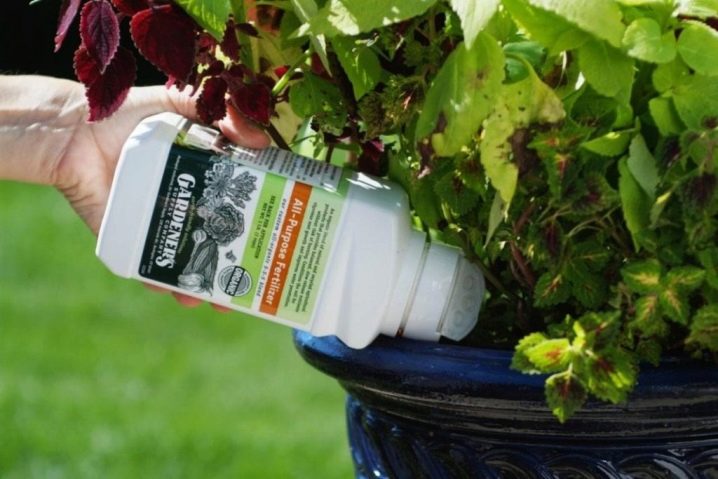
Pruning
In order for the plant to grow and develop correctly, it must be cut regularly. To do this, remove densely overgrown branches that prevent others from lighting and breathing. At the same time, the trimmed residues must be removed from the pot, otherwise they will begin to rot and cause damage to the lower aerial part of the flower. It is recommended to prune several times a year: in the spring, diseased or damaged shoots are removed, and in the summer - wilted, crooked and thickening stems.

In addition to sanitary purposes, pruning helps to awaken dormant buds and increase the rate of new shoot formation. Plants are cut off before winter rest. To do this, from mid-September, they stop feeding and reduce watering. After some of the leaves turn yellow and fall off, the tops of the shoots are cut off, leaving 5-6 strong buds on each of them. Then the plant is placed in a cool place with a temperature of +8.13 degrees and left in this state for 1-2 months. After the appearance of the first leaves, which indicate that the rose has already rested, the pot is moved to the windowsill, gradually restoring full care.
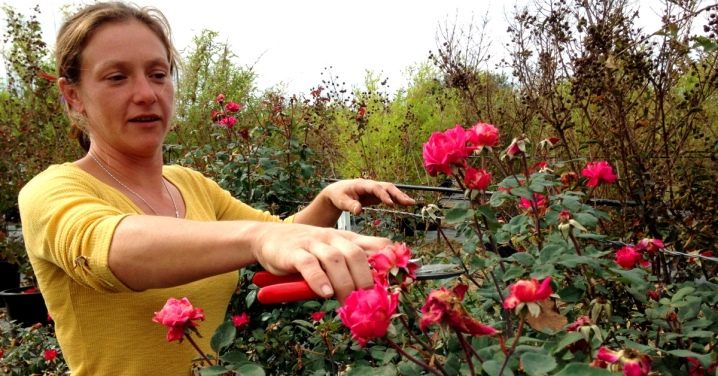
Transfer
Usually the mini-rose "Cordana" is sold in small pots, which requires transplanting it into a different environment. This is due to the fact that many manufacturers literally stuff the earthen mixtures with various fertilizers, which gives the plants a presentable presentation. However, it is contraindicated for a flower to stay in such conditions for a long time: the supply of nutrients quickly dries up, and the young bush will become cramped in a small pot.Therefore, the procedure for planting a plant in a permanent place is a mandatory event, it should be performed immediately after purchase.
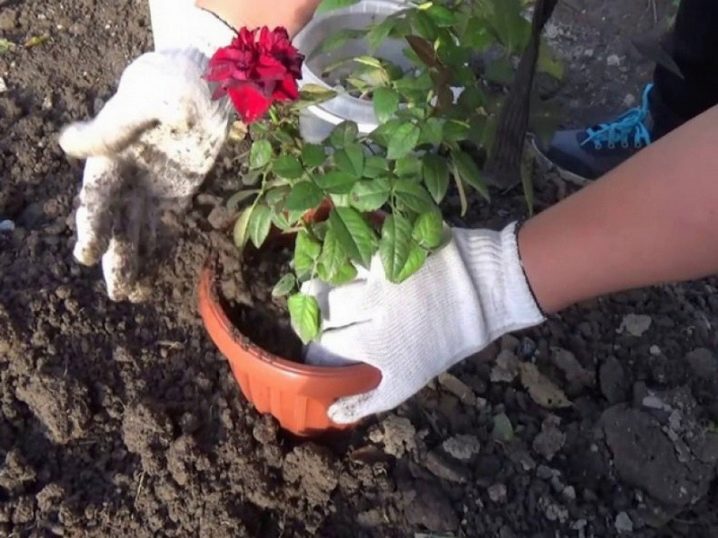
Before you start planting a plant in a new place, you need to purchase a full-size plastic pot with a volume of 1.5-2 liters, equipped with a drainage compartment and holes for draining excess liquid. A drainage mixture should be placed at the bottom of the pot, which can be expanded clay, and soil should be poured on top. You can buy it in a specialty store or prepare it yourself by mixing garden soil, sand, compost and peat in a 2: 2: 3: 1 ratio.
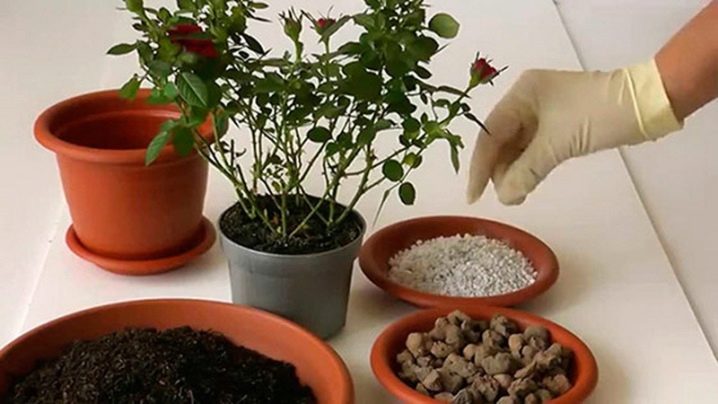
The planting process is as follows: first, all the stems on which there are flowers are removed from the shoot, and the remaining ones are shortened by a third. Then the rose is removed from the transport pot along with a lump of earth, and the roots are carefully examined. If rotten or suspicious shoots are found, they are immediately removed, and the sections are disinfected with crushed coal or green stuff. Next, the plant is planted in a pot, watered with a diluted fungicide or a weak solution of potassium permanganate. The planted rose is removed for 2-3 days in a dark place, after which it is placed on the windowsill and full care begins.
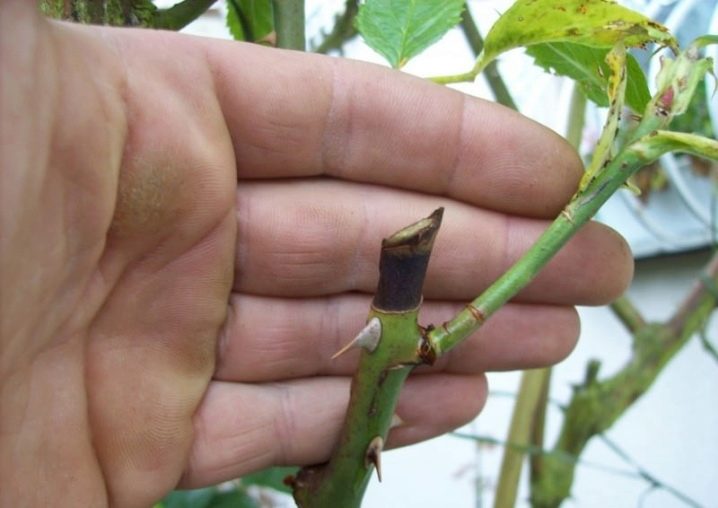
Flowers are planted in open ground in spring, after the top layer of the earth warms up to +10 degrees, or in autumn. The optimal conditions for "Kordana" are moisture-permeable, slightly acidic and neutral soils. Planting a rose in the garden is not much different from planting in pots and is carried out in the same way. The only condition is the growth of the shoot: it should not be less than 30 cm, otherwise it will be difficult for the flower to cope with aggressive environmental factors, and it will die. The plant should be planted in abundantly watered soil during daylight hours and in the absence of rain and wind. Whichever way the plant is planted, it is recommended to do this with a growing moon, but treatment from pests, on the contrary, is better done with a waning one.

Reproduction
"Cordana" is propagated by cuttings. To do this, use cut tops of shoots up to 3 mm thick, having 3-4 buds. The cut site is cut off at an angle of 45 degrees and treated with any growth stimulant, for example, "Kornevin". Then the cutting is placed in a container with settled water, the temperature of which should be 2-3 degrees higher than room temperature. The first root hairs usually appear after 2-2.5 weeks, after which the sprouts can be transplanted into small seedling containers. If possible, a small home greenhouse is built for young plants, in which they will feel more comfortable and protected. When the first leaves appear, the rooting process of the cutting can be considered successful.
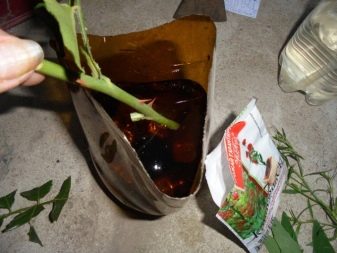
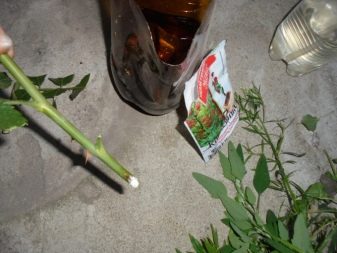
Reproduction of mini-roses "Cordana" can be performed not only by cuttings, but also by seeds. For this, at the end of winter, seeds are sown in containers for seedlings, from which by the end of spring young bushes grow, quite ready for transplanting into large pots. Seeds should be germinated at a temperature of +18 degrees and natural light. You need to be especially careful when choosing seeds for propagation, buying them only in specialized stores. This is due to the fact that the variety is hybrid, and when using low-quality seeds, new plants may not inherit the maternal traits in full.
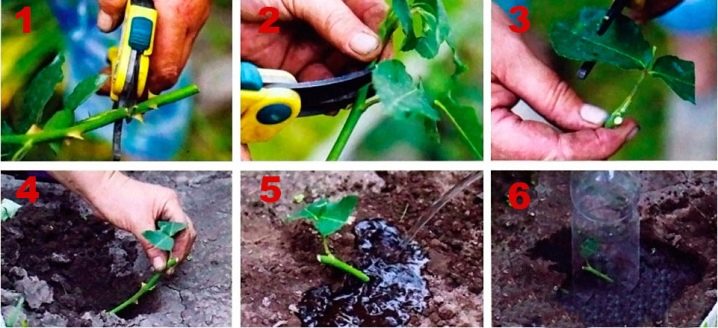
Diseases and pests
Unfortunately, roses of the "Cordana" variety are rather weak plants, and in the absence of proper care they often undergo various diseases. The main reasons for the appearance of diseases are poor care, planting in dirty soil and proximity to infected plants. The most common disease in roses is fungal infections. A favorable environment for their development is considered to be the high humidity of the soil and air, as well as the thickening of the bushes.The first signs of a fungal infection are darkening of the lower parts of the shoot, the formation of dark spots on the leaves, as well as the appearance of a white or gray bloom on them.
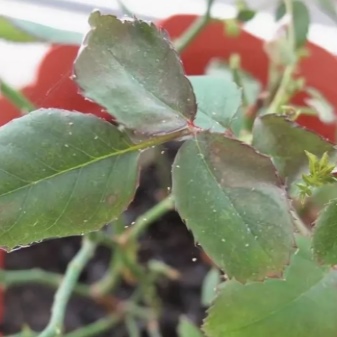

To prevent the appearance of fungal diseases, it is recommended to treat the soil with biological fungicides such as Fitosporin, Mikosan V and Trichoderm, as well as immunomodulators Epina, Zircon and Novosila.
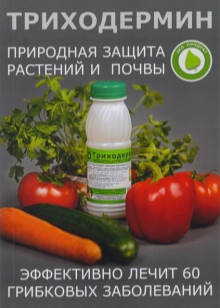
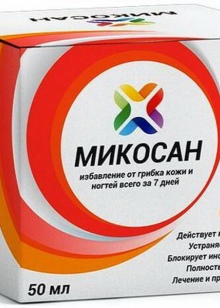
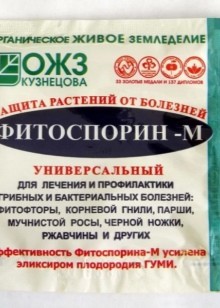
Proper planting, proper care, regular prevention of fungal diseases and timely pest control will help to grow a beautiful and healthy plant that can delight its owners for more than one year.
For information on how to propagate the "Cordana" rose with cuttings, see the next video.

































































































The comment was sent successfully.